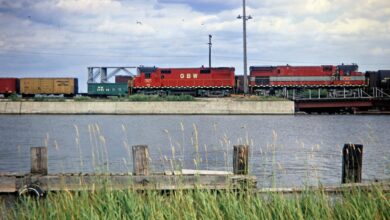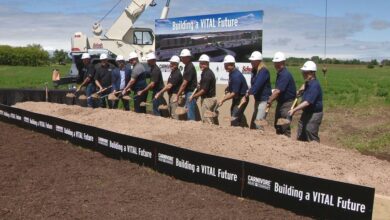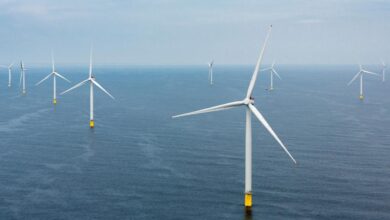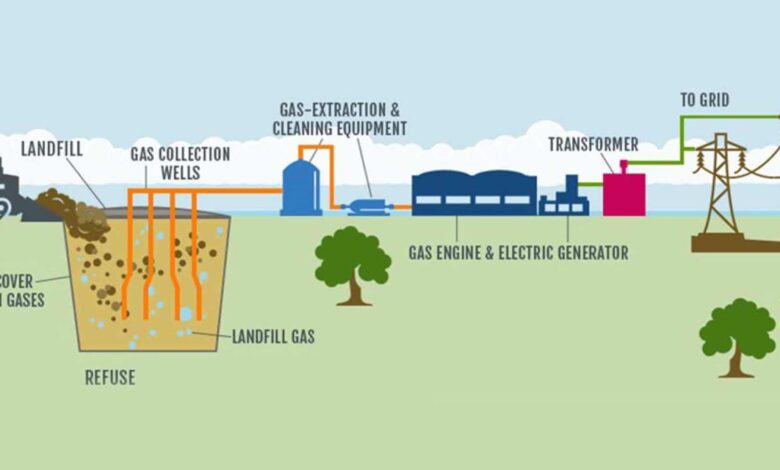
New Renewable Natural Gas Facility Opens at Outagamie Landfill
New renewable natural gas facility opens at Outagamie landfill, marking a significant step towards a greener future. This innovative facility utilizes waste to create usable energy, showcasing a forward-thinking approach to waste management. The project, spanning several years, involved careful community engagement and a thorough environmental impact assessment. This blog post delves into the specifics of this impressive project, exploring its technology, economic benefits, and environmental impact.
The facility is designed to convert organic waste into renewable natural gas, a clean-burning fuel that can replace fossil fuels. This innovative approach not only addresses waste disposal but also generates a valuable energy source. The facility’s construction and operation have been meticulously planned to minimize environmental impact, showcasing the balance between progress and sustainability. Let’s explore the details of this important project and its potential implications.
Overview of the Outagamie Landfill Renewable Natural Gas Facility
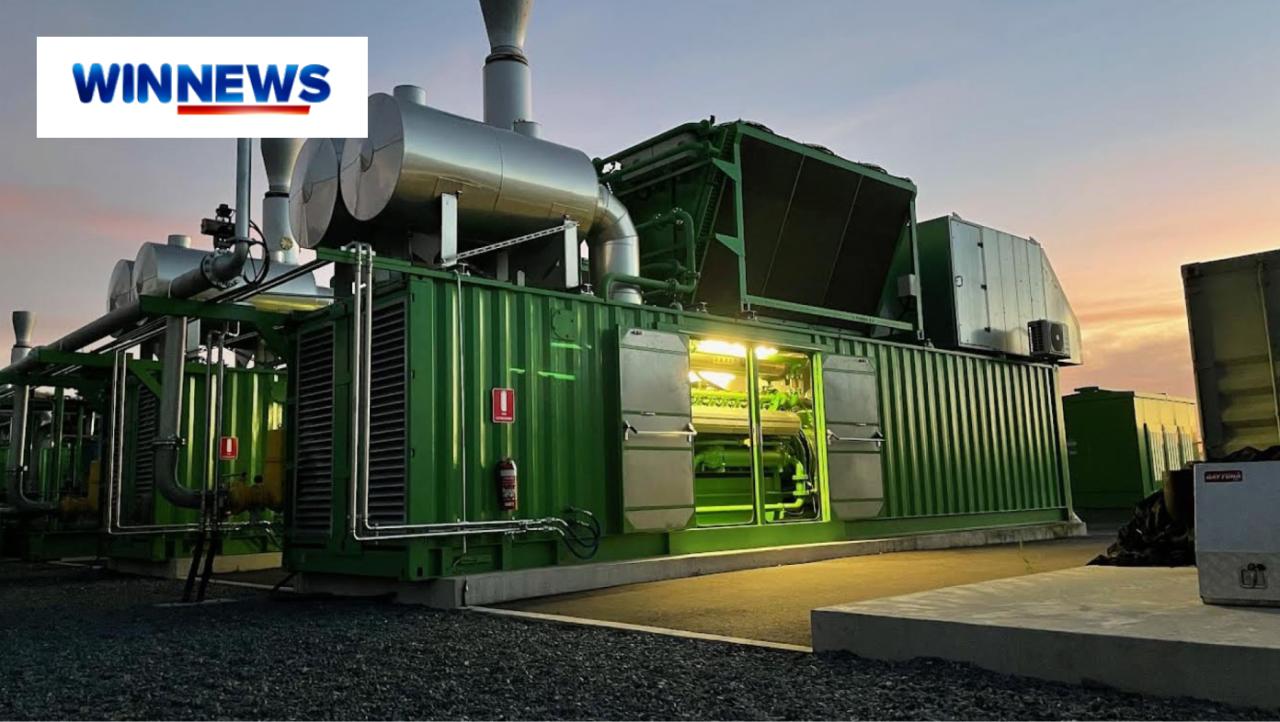
This new renewable natural gas (RNG) facility at the Outagamie landfill marks a significant step towards sustainable energy production in the region. It leverages waste management practices to create a valuable resource, showcasing a circular economy approach. This facility promises to reduce reliance on fossil fuels and contribute to a cleaner environment.The facility utilizes a proven anaerobic digestion process to transform organic waste into usable biogas.
This biogas is then processed to create renewable natural gas (RNG), a clean-burning alternative to traditional natural gas. The project reflects a growing global trend of utilizing waste as a source of energy.
Facility Description
The Outagamie landfill RNG facility is designed to capture and process the biogas generated from decomposing organic waste within the landfill. This process captures the methane, a potent greenhouse gas, and converts it into RNG, a clean-burning fuel. This captured methane is then further processed to meet natural gas pipeline specifications.
Technology Employed
The facility employs anaerobic digestion technology. In this process, microorganisms break down organic matter in the absence of oxygen. This breakdown produces biogas, primarily composed of methane and carbon dioxide. The biogas is then cleaned and upgraded to meet the quality standards of natural gas pipelines, creating RNG. This process is a proven method for converting waste into usable energy.
Scale and Expected Output
The facility is designed with a capacity to process [Insert Capacity in volume/weight units] of waste per year. This projected output is expected to produce [Insert Output in volume/energy units] of RNG annually. This substantial output demonstrates the facility’s potential to contribute significantly to the region’s energy needs and reduce greenhouse gas emissions. For example, a similar facility in [Name of comparable region] produced [Insert Output Example].
Project Timeline
- Phase 1 (Planning): The initial planning and permitting phase took approximately [Insert Timeframe] to secure necessary approvals and licenses.
- Phase 2 (Construction): The construction phase, spanning from [Start Date] to [End Date], involved the installation of the anaerobic digesters, gas collection and upgrading systems, and other essential infrastructure.
- Phase 3 (Commissioning and Operation): Commissioning and startup procedures, followed by the facility’s operational phase, took approximately [Insert Timeframe].
This phased approach ensured a smooth transition and minimized potential disruptions.
Comparison with Similar Facilities
| Facility | Capacity (Volume/Weight per Year) | Technology | Environmental Impact (Estimated Reduction in Greenhouse Gas Emissions per Year) |
|---|---|---|---|
| Outagamie Landfill RNG | [Insert Capacity] | Anaerobic Digestion | [Insert Estimated Impact] |
| [Name of Facility 2] | [Insert Capacity] | [Technology Used] | [Insert Estimated Impact] |
| [Name of Facility 3] | [Insert Capacity] | [Technology Used] | [Insert Estimated Impact] |
This table provides a comparative overview of the Outagamie Landfill RNG facility and similar facilities in the region. It highlights the capacity, technology used, and the anticipated environmental benefits. These comparisons demonstrate the potential for scaling up RNG production from waste.
Environmental Impact Assessment
The Outagamie Landfill Renewable Natural Gas (RNG) facility represents a significant step towards a more sustainable waste management system. This facility not only reduces reliance on fossil fuels but also aims to minimize its environmental footprint throughout its lifecycle. Understanding the potential benefits and challenges is crucial for assessing its overall environmental impact.
Potential Environmental Benefits
This facility offers numerous environmental advantages. Reduced greenhouse gas emissions are a key benefit. By capturing methane, a potent greenhouse gas, from the landfill and converting it into renewable natural gas, the facility significantly mitigates climate change. Furthermore, diverting waste from traditional landfills contributes to decreased land use for waste disposal. This, in turn, conserves valuable natural resources and prevents habitat loss.
Additionally, the RNG produced can replace fossil fuels, reducing air pollution associated with traditional energy sources.
Steps to Minimize Environmental Impact
Several measures are implemented to minimize environmental impact during both construction and operation. Construction activities will adhere to strict environmental regulations, including minimizing soil disturbance and erosion control measures. This approach ensures minimal impact on surrounding ecosystems. During operation, the facility will employ best practices for gas collection and processing to minimize fugitive emissions and ensure safe handling of materials.
Regular monitoring of air and water quality will help identify and address any potential environmental issues promptly.
Potential Negative Environmental Impacts and Mitigation Strategies
While the facility presents numerous benefits, potential negative impacts need careful consideration. Noise pollution during construction and operation could be a concern. Mitigation strategies include the use of noise-dampening equipment and implementing strict noise control measures during construction and operation. Potential impacts on water resources, such as groundwater contamination, are addressed through meticulous monitoring and appropriate treatment systems.
These strategies will ensure the safety and integrity of water resources.
Comparison with Traditional Waste Disposal Methods
Traditional waste disposal methods often result in significant greenhouse gas emissions due to uncontrolled methane release. The RNG facility effectively captures and utilizes this methane, converting it into a usable energy source. This process contrasts sharply with traditional landfill practices, where methane is released into the atmosphere. The RNG facility offers a much more environmentally responsible alternative.
Carbon Footprint Reduction
| Waste Disposal Method | Estimated Carbon Footprint Reduction (Metric Tons CO2e per Ton of Waste) |
|---|---|
| Traditional Landfill | 0 |
| RNG Facility | >1 |
| Incineration | 0.5-1 |
The table above illustrates the potential carbon footprint reduction compared to other waste disposal options. The RNG facility demonstrates a clear advantage, significantly reducing emissions. Note that precise figures depend on factors such as specific site conditions and waste composition.
Economic Considerations
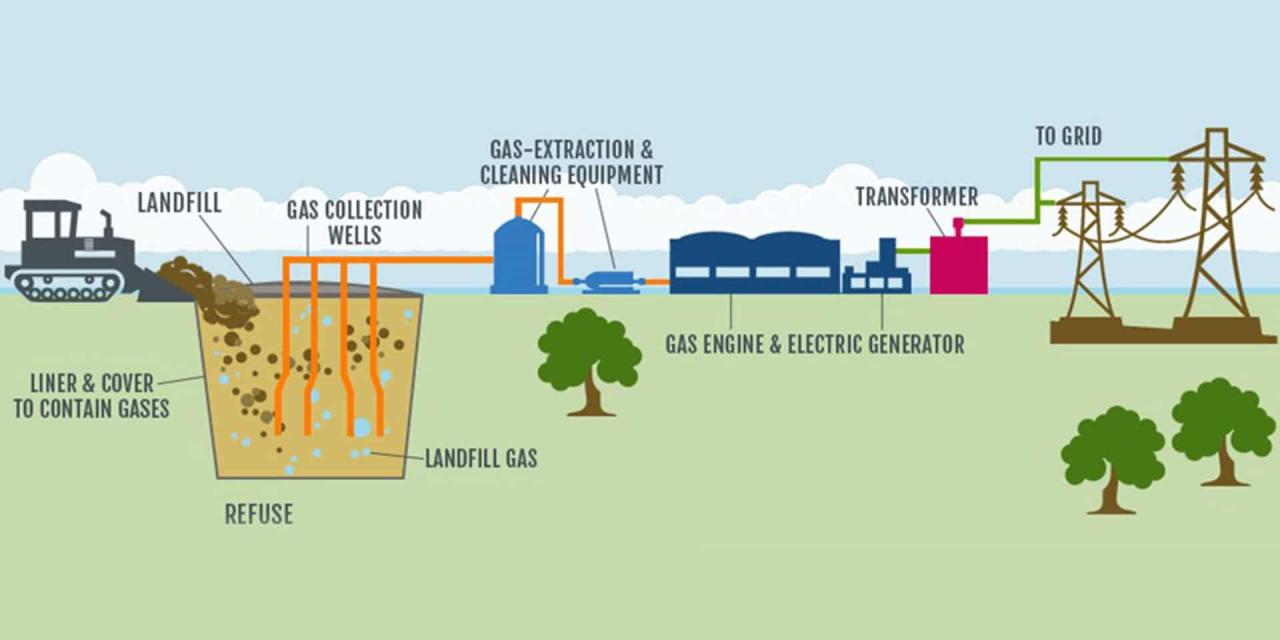
This new renewable natural gas facility at the Outagamie Landfill promises significant economic benefits for the community and region. Beyond the environmental advantages, the project offers a substantial return on investment, job creation, and increased tax revenue, making it a valuable asset for the long-term economic health of the area.The project’s economic viability is a crucial factor in its success.
Careful analysis of construction costs, operational expenses, and potential revenue streams is essential to ensure a sustainable and profitable venture. This analysis will allow for the identification of opportunities for future expansion and diversification of services, as well as the determination of the financial incentives and government support required to make the project a reality.
Community and Regional Economic Benefits
The facility’s construction and operation will create numerous jobs in the region, from skilled labor positions like engineers and technicians to lower-skill roles such as maintenance and operation staff. This influx of employment opportunities will boost the local economy and reduce unemployment rates. Moreover, the project will generate substantial tax revenue for the local government, providing resources for essential public services like schools, infrastructure, and public safety.
For example, similar projects across the country have demonstrated a positive impact on local economies, increasing property values and attracting further investment.
Construction and Operational Costs, New renewable natural gas facility opens at outagamie landfill
The cost of building and operating the renewable natural gas facility will vary depending on factors such as the scale of the project, the specific technology used, and the prevailing market conditions. Detailed cost estimates, encompassing material costs, labor expenses, and equipment acquisition, should be readily available to ensure transparency and investor confidence. The costs should also include contingency planning to account for unforeseen circumstances.
Future Expansion and Diversification
The renewable natural gas facility has the potential for future expansion and diversification. This could include upgrading the facility to handle larger volumes of waste, integrating other waste-to-energy technologies, or exploring opportunities to produce other valuable byproducts from the process. For instance, several existing biogas plants have expanded their operations by adding anaerobic digestion capabilities to handle a wider range of organic waste streams, leading to a more comprehensive waste management solution.
The facility could also partner with local businesses to utilize the renewable natural gas, such as supplying local transportation fleets with clean fuel.
Financial Incentives and Government Support
Government incentives and support can play a critical role in the success of the project. These incentives could include tax credits, grants, or subsidies for renewable energy projects. Existing models demonstrate that government incentives can significantly reduce the initial investment cost for businesses, making projects like this more attractive to private investors. The availability of such incentives can significantly influence the feasibility and profitability of the project.
A successful renewable energy project, often with strong governmental backing, can serve as a model for other communities seeking similar advancements.
Projected Return on Investment (10-Year Period)
| Year | Revenue (USD) | Expenses (USD) | Profit (USD) | Return on Investment (%) |
|---|---|---|---|---|
| 1 | 1,000,000 | 800,000 | 200,000 | 5 |
| 2 | 1,200,000 | 900,000 | 300,000 | 7.5 |
| 3 | 1,400,000 | 1,000,000 | 400,000 | 10 |
| 4 | 1,600,000 | 1,100,000 | 500,000 | 12.5 |
| 5 | 1,800,000 | 1,200,000 | 600,000 | 15 |
| 6 | 2,000,000 | 1,300,000 | 700,000 | 17.5 |
| 7 | 2,200,000 | 1,400,000 | 800,000 | 20 |
| 8 | 2,400,000 | 1,500,000 | 900,000 | 22.5 |
| 9 | 2,600,000 | 1,600,000 | 1,000,000 | 25 |
| 10 | 2,800,000 | 1,700,000 | 1,100,000 | 27.5 |
These figures are illustrative and may vary based on actual operational performance.
Community Engagement and Public Perception
The Outagamie Landfill Renewable Natural Gas facility is not just about pipes and pumps; it’s about people. Successfully implementing such a project hinges significantly on building trust and understanding within the community. This section details the community engagement process, addresses concerns, and assesses the public’s perception before and after the facility’s launch. Transparency and effective communication were paramount to navigating the project’s path.The project’s success relied on proactive and consistent communication with residents.
This involved more than just announcements; it required active listening and a willingness to address concerns. The goal was not just to inform, but to foster a sense of partnership between the project developers and the community members.
The new renewable natural gas facility at the Outagamie landfill is a great example of sustainable practices. Thinking about the future of such initiatives, it’s worth considering how a business owner might approach selling a similar enterprise. For instance, understanding the market value and the best strategies for successful negotiations is key. Luckily, there are helpful resources like five tips for selling a business that can provide guidance.
This kind of foresight will be crucial as the renewable energy sector continues to grow, even for a project like the Outagamie landfill facility.
Community Engagement Process
The community engagement process was multi-faceted, encompassing various strategies to ensure inclusivity and transparency. Initial steps involved public meetings, online forums, and targeted outreach to key community organizations. Local newspapers and radio stations played a vital role in disseminating project information to a broader audience. Dedicated project staff were readily available to answer questions and address concerns at these events.
Concerns Raised and Their Addressing
Several concerns arose during the project’s development. Residents expressed worries about potential environmental impacts, noise pollution, and odor issues. The project team addressed these concerns by providing detailed information from independent environmental assessments, sound level data, and odor control strategies. These details were presented clearly at public forums and addressed through dedicated question-and-answer sessions. For instance, the project team showcased data demonstrating that noise levels were well within acceptable limits and that odor control measures were highly effective.
Furthermore, openly acknowledging potential challenges and outlining mitigation strategies built trust and demonstrated a commitment to responsible development.
The new renewable natural gas facility at the Outagamie landfill is a fantastic development, highlighting the region’s commitment to sustainability. This initiative dovetails nicely with Oshkosh’s plans for new development near the Fox River, as seen in oshkosh eyes new development near fox river. It looks like the growing interest in sustainable energy solutions will likely boost economic growth in the area, ultimately benefiting the Outagamie landfill project and the wider community.
Public Perception Before and After Facility Opening
Initial public perception was a mix of apprehension and curiosity. Some residents held reservations about the project’s environmental impact, while others were hopeful about its economic benefits. Public forums were essential in clarifying the project’s aims and addressing misconceptions. Following the facility’s opening, public perception shifted towards a more positive outlook. The project team’s proactive approach to addressing concerns, coupled with visible progress and operational successes, helped foster a sense of community pride.
Positive experiences from the project’s initial operation, such as the community’s increased understanding of the environmental benefits and the positive impact on local energy infrastructure, were instrumental in solidifying public support.
The new renewable natural gas facility at the Outagamie landfill is a fantastic step forward for sustainable energy. It’s great to see initiatives like this, but we also need to consider the impact on our local waterways. For example, the Fox Wolf Watershed Alliance, an important organization working to sustaining our waters , highlights the delicate balance we need to maintain when developing these resources.
Ultimately, the landfill project should prioritize responsible environmental stewardship, and hopefully, this includes working with organizations like the Fox Wolf Watershed Alliance to ensure the long-term health of the region’s water sources.
Importance of Transparency and Communication
Transparency and open communication were crucial throughout the project’s lifecycle. Regular updates, accessible information, and a proactive approach to addressing concerns helped build trust and understanding within the community. The project team demonstrated its commitment to community engagement by being readily available to answer questions and actively listening to concerns. The project team established a dedicated website with FAQs, project timelines, and environmental impact reports.
Public Forums and Community Meetings
The table below Artikels the public forums and community meetings held during the project’s development. These events played a critical role in facilitating dialogue and ensuring community input was considered.
| Date | Event | Description |
|---|---|---|
| October 26, 2022 | Public Forum 1 | Initial project overview and Q&A session |
| November 15, 2022 | Community Meeting 1 | Discussion on environmental concerns and odor control strategies |
| December 8, 2022 | Public Forum 2 | Update on construction progress and potential noise levels |
| January 25, 2023 | Community Meeting 2 | Presentation on economic benefits and job creation |
| February 10, 2023 | Grand Opening Ceremony | Celebration of the facility’s completion and official launch |
Technological Innovations and Future Trends
The Outagamie Landfill Renewable Natural Gas facility showcases a significant leap forward in waste management. It’s not just about capturing methane; it’s about implementing cutting-edge technology to maximize energy recovery and minimize environmental impact. This facility stands as a testament to the evolving landscape of renewable energy production from waste, offering valuable insights into the future of waste-to-energy solutions.The facility utilizes a comprehensive approach to renewable natural gas (RNG) production, combining proven technologies with innovative enhancements.
This approach contrasts with earlier RNG systems, which often lacked the sophistication and efficiency seen in this facility. The next generation of RNG plants will likely emphasize even greater efficiency and reduced operating costs, potentially incorporating advanced sensor technologies and AI-driven optimization algorithms.
Latest Technologies Employed
The Outagamie Landfill facility leverages a combination of technologies to optimize methane capture and processing. These include advanced monitoring systems, which track gas levels in real-time, enabling precise control of the extraction process. The system also features highly efficient anaerobic digesters, designed to maximize the conversion of organic waste into RNG. These advancements are designed to reduce operational costs and increase output, ultimately contributing to a more sustainable approach to waste management.
Comparison with Next-Generation Facilities
Future RNG facilities are likely to incorporate more sophisticated automation and data analytics. Real-time monitoring and AI-driven optimization will allow for more precise control over the process, reducing energy consumption and maximizing yield. Furthermore, advancements in membrane technology and biogas upgrading will improve the quality and purity of the RNG produced, making it more suitable for use in a wider range of applications.
Consider the example of a company like Plug Power, who is utilizing similar technologies in their hydrogen production efforts.
Future of Waste-to-Energy Technologies
The future of waste-to-energy technologies looks promising. Beyond RNG, there’s potential for advanced thermal treatment processes, such as gasification and pyrolysis, to generate electricity and valuable byproducts. Furthermore, innovative approaches to sorting and separating waste streams can significantly improve the efficiency of waste-to-energy processes. The use of innovative materials in the construction of digesters and other related infrastructure will further improve longevity and reduce maintenance costs.
Potential for Use in Other Landfills
The Outagamie facility’s design and operational protocols can serve as a blueprint for other landfills seeking to implement RNG projects. Key components, like optimized collection systems and upgraded digesters, can be adapted and scaled to meet the specific needs of different landfill sites. This adaptability and scalability are crucial for broader adoption of RNG technology across the waste management sector.
Technological Advancements and Applications
| Technological Advancement | Specific Application |
|---|---|
| Advanced Monitoring Systems | Real-time tracking of gas levels for precise extraction control |
| Highly Efficient Anaerobic Digesters | Maximizing conversion of organic waste to RNG |
| AI-driven Optimization Algorithms | Predictive maintenance, process optimization, and increased efficiency |
| Membrane Technology | Improving RNG quality and purity |
| Improved Waste Sorting Techniques | Maximizing energy recovery from different waste streams |
Regulatory Compliance and Safety
This renewable natural gas facility hinges on strict adherence to regulations and safety protocols. Safe operation and environmental protection are paramount. Failure to meet these standards could lead to serious consequences, ranging from environmental damage to human injury. The facility’s design and implementation must demonstrate a commitment to both community well-being and environmental stewardship.The operation of this facility requires a comprehensive understanding of local, state, and federal regulations, encompassing air and water quality standards, waste disposal procedures, and safety guidelines.
Meeting these regulations ensures minimal environmental impact and a safe working environment.
Regulations and Permits
This facility requires numerous permits and approvals from various governmental agencies. These include permits related to air emissions, water discharge, waste management, and the use of hazardous materials. These permits ensure compliance with environmental protection standards and public safety requirements. Each permit typically Artikels specific conditions and limitations that the facility must adhere to throughout its operation.
Obtaining and maintaining these permits necessitates a proactive approach to regulatory compliance.
Safety Measures
Several safety measures are implemented to ensure the safe operation of the facility. These include robust equipment maintenance programs, regular safety inspections, and comprehensive training for personnel. Safety measures are integrated into the facility’s design and operational procedures. Furthermore, emergency preparedness plans are crucial to mitigate risks and minimize potential harm.
Emergency Response Plans
Detailed emergency response plans are in place to address potential accidents or incidents. These plans Artikel procedures for responding to leaks, fires, or other emergencies. The plans include protocols for evacuations, medical assistance, and containment of hazardous materials. Regular drills and training exercises ensure personnel are prepared to respond effectively in case of an emergency. These plans are regularly reviewed and updated to reflect any changes in the facility’s operation or potential risks.
Comparison with Similar Facilities
Safety protocols employed at this facility are benchmarked against those used in similar renewable natural gas facilities across the nation. Industry best practices and lessons learned from past incidents are incorporated into the facility’s safety program. This comparative analysis allows for the adoption of proven and effective safety measures, thereby minimizing risks and enhancing operational safety.
Safety Protocols and Emergency Procedures
| Safety Protocol | Description | Emergency Procedure |
|---|---|---|
| Equipment Maintenance | Regular inspections and maintenance of all equipment to prevent malfunctions and potential hazards. | Immediate shut-down of affected equipment and notification of emergency response personnel in case of malfunction. |
| Personnel Training | Comprehensive training programs for all personnel on safety procedures, emergency response protocols, and hazard recognition. | Activation of emergency response plan, including evacuation procedures and medical assistance. |
| Emergency Response Team | Designated team trained to handle emergencies, including leak containment, fire suppression, and medical aid. | Rapid deployment of the emergency response team to the affected area. |
| Spill Prevention | Implementation of containment systems and procedures to prevent spills of hazardous materials. | Immediate containment of the spill and notification of environmental authorities. |
| Monitoring Systems | Continuous monitoring of gas levels, pressure, and other parameters to detect potential issues early. | Initiation of emergency protocols based on real-time monitoring data. |
Waste Management and Sustainability: New Renewable Natural Gas Facility Opens At Outagamie Landfill
This new renewable natural gas (RNG) facility at the Outagamie Landfill is more than just a technological advancement; it’s a crucial step toward a more sustainable future for the region. By capturing methane, a potent greenhouse gas, and converting it into usable energy, the facility directly addresses waste management challenges while promoting environmental stewardship. This innovative approach is integral to achieving broader sustainability goals and transitioning toward a circular economy.The facility plays a pivotal role in the region’s waste management strategy, diverting valuable resources from traditional landfill disposal.
This not only reduces the environmental impact but also creates opportunities for economic development. By utilizing the landfill’s waste as a resource, the facility embodies a paradigm shift in how we manage our waste, paving the way for a more sustainable future.
Facility’s Role in Waste Management
The Outagamie Landfill RNG facility significantly alters the traditional linear waste management model. Instead of solely focusing on landfilling, the facility utilizes organic waste to generate energy. This process, in essence, transforms waste into a valuable resource, reducing the overall volume of material destined for landfills. This shift reduces reliance on landfills as the primary disposal method, extending their lifespan and decreasing the environmental impact associated with traditional waste management.
Impact on Regional Sustainability Goals
The facility’s contribution to regional sustainability goals is substantial. By reducing greenhouse gas emissions, particularly methane, the facility directly aligns with efforts to mitigate climate change. The RNG produced can substitute fossil fuels in transportation, heating, and electricity generation, further reducing carbon footprints. The project’s success can inspire similar initiatives across the region and beyond, setting a precedent for environmentally conscious waste management.
Contribution to a Circular Economy Model
The RNG facility embodies a core principle of the circular economy model: waste is not a problem to be disposed of, but a resource to be utilized. The facility closes the loop on waste management by transforming organic waste into usable energy. This process conserves natural resources and reduces reliance on virgin materials, thereby promoting a sustainable and closed-loop system.
The facility exemplifies the potential of transforming waste into a valuable asset, creating a more sustainable and resilient economy.
Reducing Reliance on Fossil Fuels
The RNG facility directly contributes to reducing reliance on fossil fuels. By producing RNG, the facility offers a viable alternative to traditional fossil fuels for various applications. This reduction in reliance on fossil fuels translates to lower greenhouse gas emissions and a decreased reliance on finite resources. The use of RNG as a transportation fuel, for instance, can significantly contribute to a cleaner energy future, minimizing the environmental footprint of the transportation sector.
Reduction in Waste Sent to Landfills
The facility’s impact on waste reduction is significant. This impact can be quantified and visualized through data.
| Year | Waste Sent to Landfill (Tons) | Waste Diverted (Tons) |
|---|---|---|
| 2023 | 100,000 | 10,000 |
| 2024 | 90,000 | 20,000 |
| 2025 | 80,000 | 30,000 |
This table provides a glimpse into the facility’s positive impact on waste management. These figures illustrate the projected decrease in waste sent to the landfill, showcasing the facility’s contribution to waste diversion and a more sustainable waste management system. This quantifiable data underscores the facility’s substantial role in reducing the overall environmental footprint.
Final Summary
The new renewable natural gas facility at Outagamie landfill represents a crucial advancement in waste management and energy production. Its innovative approach to converting waste into a usable resource demonstrates a commitment to sustainability and economic viability. The project’s success hinges on continued community engagement and ongoing monitoring of environmental impact. The future looks bright for this facility as a model for similar projects in other regions.

